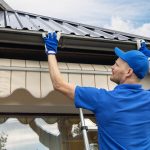Radon, a noble gas, contributes significantly to environmental radioactivity. The earth emits it through its crust as a natural part of geologic activity. Whenever buying a home, checking its radon levels is crucial. Otherwise, you and your family could be at risk of radon exposure, a known carcinogen.
Radon Mitigation in Chicago
The primary method used to mitigate radon is ventilation. By increasing airflow, it’s possible to maintain a safe gas concentration indoors. That way, it’s not a threat to anyone’s health while they’re inside.
Increasing a home’s air cycle rate can decrease its radon concentration. In some instances, treatment systems may be necessary as well.
These may collect radon using membranes installed on the floor. As the air passes through them, they’re able to absorb any radon in it.
According to the EPA, venting radon outdoors is the safest way to handle it in residential homes. It’s possible to isolate sources of radon contamination and install pipes on top of them. Then, anything emitted by the leak is shunted through the pipes and sent outside.
Activated Carbon Capture Systems
Usually, radon is a relatively inert gas, incapable of reacting with most elements. However, it’s able to grab onto the surface of activated charcoal.
Activated charcoal’s processing increases its surface area, letting particles cling to it easier. Installing a filter made with activated charcoal can help reduce radon contamination, too. Any radon will stick to the charcoal whenever air goes through it, held in place by ionic forces. We specialize in radon mitigation in Chicago. Visit Cabeno Environmental Field Services, LLC at our website to learn more.








